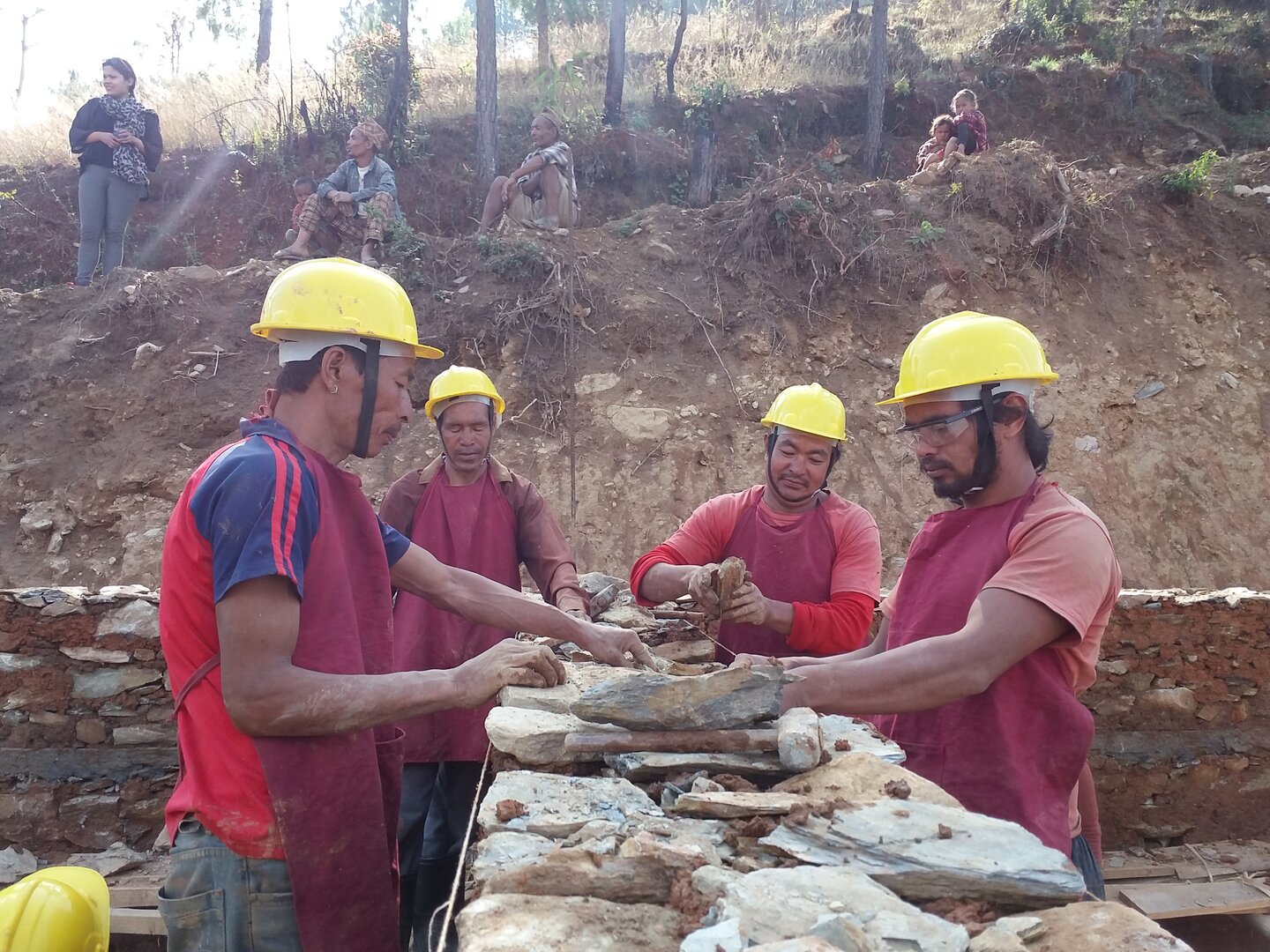The end of June marked the closure of our last earthquake-response projects funded by Swiss Solidarity, implemented in collaboration with Solidar Suisse. There is inevitable sadness in disbanding a great team of committed staff, but this is the nature of humanitarian responses. And the team ends their work with two very positive external evaluations - one project-specific, and one by Swiss Solidarity. The former found that the team “demonstrated excellence in being resilient, smart, analytic and decisive in dealing with challenges and emerging issues” (Meen Chhetri and Annelies Thiele, 2019); the latter, which looked at all Swiss Solidarity funded building reconstruction, stated more simply “very good project implementation” (Tom Schacher, 2019).
Positive evaluations are of course nice to have, but it is also important to reflect internally on lessons learned – what factors were important for successful implementation; how we could improve in future. This is particularly timely given current global scrutiny of the “nexus” between humanitarian and development assistance (or even the triple nexus, incorporating peace-building, which is happily less of a preoccupation in Nepal these days). The post-earthquake reconstruction work, lasting four years, clearly spans the humanitarian - development nexus. Although some professionals still perceive a major divide between the two disciplines, the reality of their close interweaving is increasingly recognized – as for example in the UN Grand Bargain. Speaking to a wide gathering of Helvetas staff in Switzerland earlier this week, Ambassador Manuel Bessler, Deputy General of SDC and Head of the Swiss Humanitarian Aid Unit, used a nice analogy. He likened the two disciplines to the cogs in a gear box – humanitarian aid being the small cogs for early acceleration, and development work being the bigger, more powerful but slower cogs.
What did we learn from the four years of post-earthquake reconstruction? This will be the topic of an eventual publication, but in the meanwhile, three immediate observations.
Being present before the disaster is a huge advantage
Helvetas has been present in Nepal for over 60 years, during which time we have built up good relations with the government - both nationally and locally. This enabled us to operate more rapidly and smoothly than humanitarian INGOs arriving in the country for the first time – which, after the immediate emergency period of three months, were required to register with the government to continue operations. Our earthquake response activities focused in an area in which we had project activities before the earthquake and had established trust with the local communities as well as partnerships with local NGOs - which joined us in the response effort. Existing project activities could be tailored to the new post-earthquake needs – the most obvious being the Employment Fund, a vocational education project funded by the Swiss and British governments (respectively SDC and DFID) which was adapted to focus solely on training local people as masons and carpenters skilled in earthquake-resilient construction techniques.
In operating at the “nexus”, these advantages of a development organization could be nicely combined with the humanitarian expertise of Solidar Suisse, particularly its specific knowledge of earthquake-resilient construction.
Local expertise – minimal expatriates
Humanitarian assistance is often associated with an influx of many highly experienced humanitarian experts arriving from their countries of origin. There can be a need for such expertise, but it is generally limited, and short term. The Helvetas response to the earthquake in Nepal was essentially Nepalese led and driven, with selected support as needed from expatriate staff – notably in fund-raising, and in earthquake-resilient construction techniques as provided by Solidar. Of course, this was backed by regular interactions with Head Office, but without physical presence. For the SDC-supported training, a resident member of SDC’s humanitarian division also provided technical assistance.

Identifying the vulnerable early on – with community acceptance
At the time of the earthquake crisis, humanitarian values took precedence – especially the principles of humanity and impartiality, and thus assistance to all. Nevertheless, given our strong organizational focus on reaching the economically poor and socially disadvantaged, this was something never far from the minds of staff. Indeed, this influenced the choice of geographical focus. Once the immediate period of rescue and relief was over, we attempted to identify those most in need of support – both in the form of cash to replace important assets (generally this was used to purchase livestock), and in technical and material assistance for rebuilding their home. It is far easier to identify the most disadvantaged in a regular development situation than in a situation in which all have suffered major losses. This might be obvious – but the difficulty was perhaps underestimated. The use of an internationally applied scorecard to identify vulnerable households generated conflict; for example, the scorecard gave a greater vulnerability weighting to households with many members, whereas the most vulnerable were often living alone or just two together. The list of vulnerable households produced later (in 2018) by the National Reconstruction Authority, NRA, also created controversy.
Huge progress in reconstruction has been made over four years – yet those who were the most disadvantaged before the earthquake remain those least likely to have rebuilt their homes. Their situation is such that they need more support than others – in dealing with the bureaucracy of accessing government grants as well as paying for materials and labor. This is something on which we would place even greater emphasis in any future situation.


